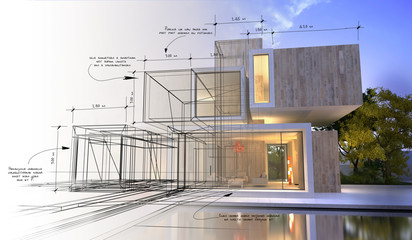Architecture is more than just constructing buildings; it is the art and science of designing spaces that inspire, function, and endure. From residential homes to commercial structures, architecture shapes the environment, reflects cultural values, and enhances the quality of life. Modern architecture combines creativity, technology, and sustainability to create spaces that are both beautiful and practical.

The Importance of Architecture
Architecture plays a crucial role in everyday life. Well-designed spaces influence how people feel, interact, and perform within them. Functional layouts improve efficiency, natural lighting enhances mood, and thoughtful aesthetics create lasting impressions.
Beyond personal experience, architecture impacts society by promoting urban development, improving public spaces, and fostering sustainable practices. It combines technical expertise with artistic vision to craft environments that stand the test of time.
Key Principles of Architecture
Effective architecture relies on several core principles that guide design and construction:
- Functionality: Spaces must meet the practical needs of occupants.
- Aesthetics: Design elements like form, color, and texture create visual appeal.
- Sustainability: Energy-efficient designs and eco-friendly materials reduce environmental impact.
- Structural Integrity: Buildings must be safe, durable, and compliant with regulations.
- Contextual Harmony: Architecture should complement the surrounding environment.
- Innovation: Modern architecture often incorporates cutting-edge technology and creative solutions.
Balancing these principles ensures that architectural projects are both visually striking and highly functional.
Residential Architecture
Residential architecture focuses on designing homes that reflect personality, lifestyle, and comfort. It includes single-family houses, apartments, and multi-unit dwellings.
Key considerations in residential architecture include:
- Space Optimization: Efficient layouts maximize usability.
- Natural Light: Large windows and open spaces improve ambiance.
- Energy Efficiency: Insulation, sustainable materials, and modern appliances reduce utility costs.
- Aesthetic Design: Interior and exterior elements enhance visual appeal and personal expression.
- Safety and Accessibility: Ensuring homes are safe, comfortable, and accessible for all occupants.
Residential architecture combines creativity and practicality, providing homes that are both inviting and functional.
Commercial Architecture
Commercial architecture focuses on structures used for business, retail, offices, and public services. It emphasizes functionality, efficiency, and brand identity while accommodating large numbers of users.
Key elements in commercial architecture include:
- Efficient Layouts: Spaces designed for workflow and customer experience.
- Modern Aesthetics: Designs that convey professionalism and innovation.
- Sustainability: Incorporating green technologies and materials.
- Safety Compliance: Adhering to building codes, accessibility standards, and fire safety regulations.
- Technology Integration: Smart systems for lighting, security, and climate control.
Commercial architecture enhances productivity, attracts clients, and supports sustainable business practices.
Sustainable Architecture
Sustainability is a growing focus in modern architecture. Energy-efficient buildings reduce environmental impact and lower operating costs. Techniques include:
- Green Roofs and Walls: Improve insulation and promote biodiversity.
- Solar Panels: Generate renewable energy.
- Efficient HVAC Systems: Reduce energy consumption.
- Water Conservation: Rainwater harvesting and low-flow fixtures.
- Sustainable Materials: Use of recycled or renewable resources.
Sustainable architecture aligns design with environmental responsibility, creating buildings that are efficient, resilient, and eco-friendly.
Architectural Design Trends
Current architectural trends reflect innovation, technology, and evolving lifestyles:
- Minimalism: Clean lines, open spaces, and uncluttered layouts.
- Biophilic Design: Incorporating natural elements to improve well-being.
- Smart Buildings: Integration of automation and IoT technology for efficiency.
- Adaptive Reuse: Transforming existing structures for new purposes.
- Mixed-Use Development: Combining residential, commercial, and recreational spaces in a single project.
Staying current with trends allows architects to create modern, functional, and visually appealing designs.
The Role of Technology in Architecture
Technology has revolutionized architectural design and construction. Tools like computer-aided design (CAD), building information modeling (BIM), and 3D visualization enable architects to plan, test, and refine projects with precision.
Advanced construction techniques and materials enhance safety, durability, and efficiency. Virtual reality and augmented reality allow clients to experience designs before construction begins, ensuring satisfaction and minimizing errors.
Architecture and Urban Planning
Architecture is closely connected to urban planning. Thoughtful architectural design contributes to vibrant, functional cities by integrating public spaces, transportation, and residential areas.
Key considerations include:
- Community Needs: Designing spaces that serve diverse populations.
- Traffic Flow: Efficient layouts for pedestrians and vehicles.
- Public Spaces: Parks, plazas, and recreational areas that enhance quality of life.
- Sustainability: Eco-friendly infrastructure and energy-efficient urban planning.
- Aesthetic Harmony: Ensuring buildings complement the cityscape and cultural context.
Effective urban architecture creates cities that are functional, attractive, and sustainable.
Choosing the Right Architectural Approach
Selecting the right architectural approach depends on purpose, budget, and vision. Factors to consider include:
- Project Goals: Residential comfort, commercial efficiency, or public functionality.
- Budget and Resources: Aligning design with financial constraints.
- Sustainability Goals: Prioritizing energy efficiency and eco-friendly materials.
- Innovation and Style: Balancing creative design with practicality and functionality.
A thoughtful approach ensures that architecture fulfills objectives while maintaining beauty and usability.
Architecture shapes the way we live, work, and interact with the world. From residential homes to commercial complexes, innovative and sustainable design improves quality of life, enhances efficiency, and creates lasting impressions.
By combining aesthetics, functionality, and environmental responsibility, architects create spaces that inspire, endure, and adapt to changing needs. Modern architecture leverages technology, design trends, and sustainability to transform the built environment, ensuring spaces are both visually appealing and practical.
Investing in thoughtful architectural design is an investment in comfort, efficiency, and future growth. Well-designed structures reflect creativity, innovation, and an understanding of human needs, making architecture an essential element in shaping our surroundings.